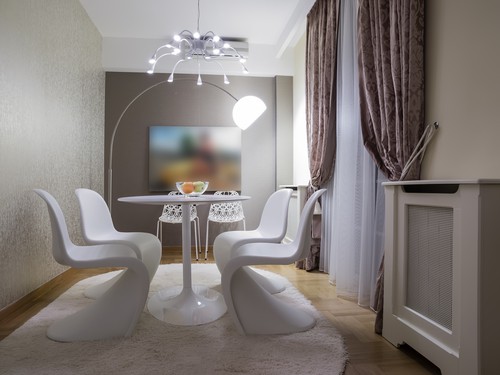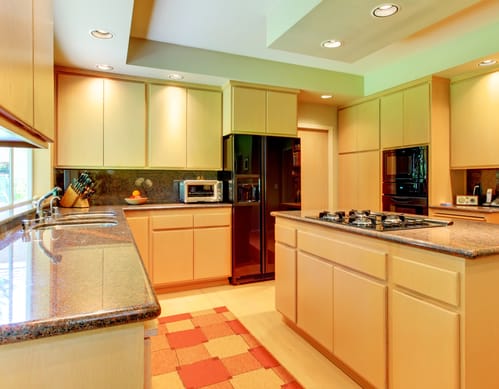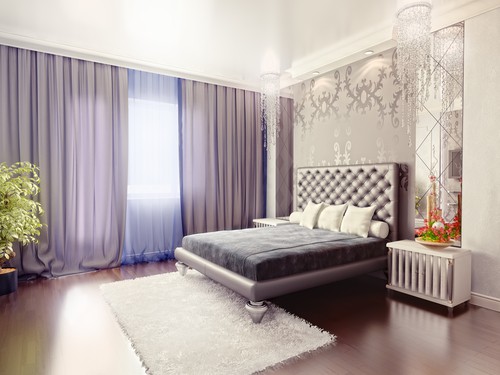With such a plethora of area rugs in the market right now, hunting for the perfect rug for the dinning room, kitchen, and bedroom is a challenging task indeed. Of the many different sizes, shapes, and kinds of materials (not to mention price points) rugs come with, there is definitely one that fits not only your budget but space beautifully. Here is how to tell which is the ONE!
Choosing Area Rugs for the Dinning Room
An area rug in a dining space adds style and comfort, but also frames the table and even defines the room itself, especially if you have an open floor plan. Regarding the optimal style to choose, there are really no rules. It’s just your personal choice. However, things change when it comes to the proper size.
I) Size
To find out what size your dinning room rug area should be, you can use your table as a reference. Measure its length and width, and add 20-24 inches on each side so that the chairs can sit on the rug when you have dinner. It is important not to let the chairs fall off the edge of the rug, else they will get tripped up of the edge off the rug or, even worse, scratch the floor when you try to slide them back in, when the rug is too small.
If your table has a leaf, make sure you include that in your calculations. For the majority of spaces, a rug around 5X8′ will look poor. Better invest in a bigger rug that measures somewhere around the neighborhood of 6X9′ to 9X12′. But, beware not to pick a rug that’s too big. Ideally, the rug should define the space and create a visible border of flooring. This means that it’s best not to “invade” the space where you have your buffet (or sideboard) unless you want to buy a cowhide rug, where some legs can be off and some can be on!
II) Color & Style
Your dining room’s palette and overall style will help pick the right color for your area rug. Or you can have the area rug be the jumping-off point of the room’s colors and design style! Feel free to use complementary accessories and fabric to play off the color hues. You can find a broad range of styles and colors, from lovely Damask area rugs with floral patterns (classic choice) and rugs with stripes to pieces with geometric motifs (for more modern homes) to fit your personal tastes and lifestyle.
But, if you are looking for a sure bet, we suggest a neutral sisal area rug, especially if you have already decorated your dining room, as it won’t compete with your design choices and add a warm, welcoming note with its subtle organic texture.
Tips:
Don’t think that just because you have an oval or round table, you have to buy a rug with round edges. You can pick a rectangle one although opting for a circular shaped rug will help bring more consistency. Undeniably, they will both look great!
If your floors draw the eye, you may also eliminate the rug. There is no rule that says you necessarily need to have a rug in a dinning space. So, whether brick or ceramic tile, hardwood or painted, you can leave your space without an area rug and be totally OK with it!
Related Articles:
Choosing an Area Rug for the Kitchen
The perfect way to dress up your home’s central gathering spot and add texture, color, and warmth is to use area rugs (you can’t go wrong with a durable, bright kitchen rug that fits your style!). Whether you need a rug to make the transition into your dinning room more stylish or non-slip mats to key areas in the kitchen, we share some ideas and tips to help you buy the one that will work for you.
I) Place them Correctly
It is good to have kitchen rugs and mats to the areas you spend most of your time standing (i.e. near the refrigerator). You could also consider placing a kitchen runner to areas that could get slippery (i.e. near the sink) or under a portable island or dinning table. Just make sure you measure these areas before you begin your find-the-perfect-kitchen-rug quest.
II) Go for Low-Pile Rugs
Since kitchens are areas that get stained a whole lot, it’s a good idea to choose a low-pile kitchen rug (i.e. made from synthetic materials or wool). Compared to other weaves, low-pile rugs are significantly more stain-resistant and way more easy to clean with just soapy water.
If you want to place an area rug in a doorway or any other high-traffic area, washable rugs will be perfect as you can simply toss them in the washing machine when they get dirty and save yourself all the trouble. Choosing a machine-washable kitchen rug is also an excellent option if you want to place a rug near the refrigerator or beneath the sink that you can easily give a good clean up when needed.
III) Choose Extra Thick
Thick kitchen rugs are the go-to option for many homeowners. They insulate your feet from the cold ceramic, linoleum or tile floors and make you feel more comfortable when walking on them. Homes with long hallways that lead into the kitchen look extra cozy with plush runners, too.
IV) Match them with your Decor
Coordinate your kitchen rugs with the items you already have in your kitchen, including your tablecloths and window treatments, as well as the kitchen table. Use accent rugs to add more color and choose circular area rugs for round tables or rectangular rugs to place under rectangular tables, breakfast seating area or breakfast nooks.
Tip: Always select rugs with a non-slip backing. If yours doesn’t have one, you can use a rug pad and place it under your kitchen rug.
Choosing an Area Rug for your Bedroom
A guest room or master suite usually don’t have lots of traffic and soiling or staining. This means that any fiber in a textured or plush style will perform very well and give a luxurious feel underfoot. In general, soft rugs are ideal for an adult room. Kids, though, are much harder on their rug, which is why a stain resistant polyester or nylon rug fiber is best. Also keep in mind that solid color rugs are much less forgiving of stains and soil than multi-color and pattern ones.
Besides that…
I) Decide on the Fiber
Synthetic and natural fibers are good options. Wool, for example, is one of the best options for bedroom carpeting, given its luxurious feel. If you are on a budget synthetic rugs are usually less costly and a more realistic option, especially if your bedroom is rather large. For the softest feel in synthetic carpeting, you can opt for nylon. However, the most budget-friendly option is polyester. Plus, it is non-allergenic, which makes it perfect for homes with people suffering from asthma and/or allergies. It should be noted, though, that you may run some issues with polyester rugs because they present problems with pilling or shedding.
II) Texture
We all love our bedrooms to have soft and comfy underfoot (plus an aesthetically pleasing appearance) so picking the right pile or texture is also important. For example, a fluffy-textured Saxony pile rug will give you the most luxurious feel and look. The same goes to velvet pile carpeting, which also offers a different look for your flooring than the long-fiber Saxony pile rugs, with its short and dense fibers.
III) Color
Gray, brown, tan or any other neutral-colored rug is a super safe option that will work beautifully with any existing colors in the bedroom (i.e. color on the walls). That said, too light colors, such as beige or white, will show dirt very easily. Depending on your personal taste, you can also place a bold-colored rug or dare to use a red, green or even blue rug to add dimension and more visual interest to the room! Now, if your bedroom is neutral, a colorful, patterned rug can make the room more interesting. However, better stay away from very busy patterns and loud colors. We want our bedrooms to be our peaceful retreats after a long day, so we need rugs that are not that stimulating.
At the end of the day, it’s all about having a place where we enjoy living in and sharing moments with our loved ones. So, feel free to be as creative as you wish and play with colors, textures, and patterns to create welcoming spaces with style!








